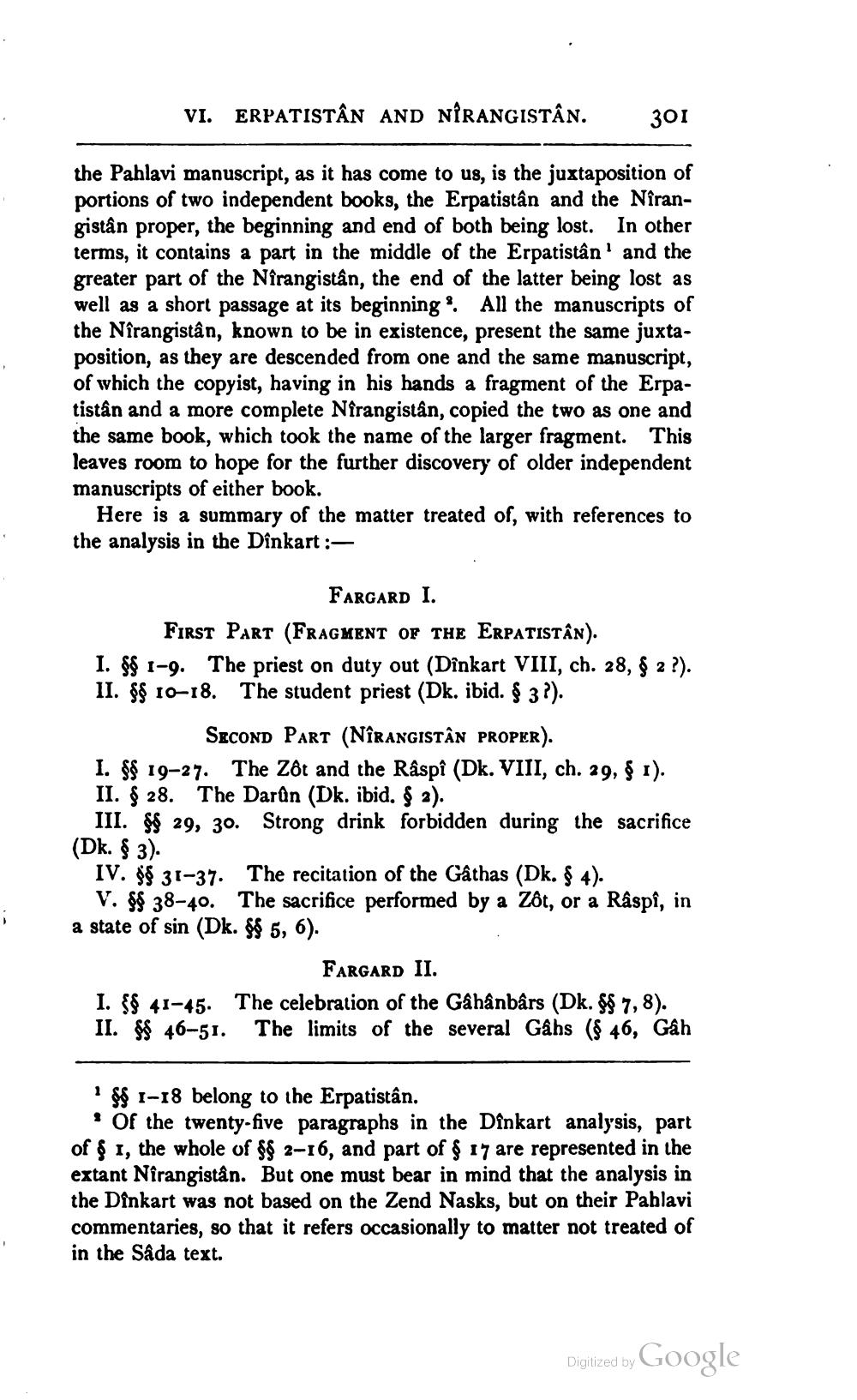________________
VI. ERPATISTÂN AND NÍRANGISTÂN.
301
the Pahlavi manuscript, as it has come to us, is the juxtaposition of portions of two independent books, the Erpatistân and the Nîrangistân proper, the beginning and end of both being lost. In other terms, it contains a part in the middle of the Erpatistân' and the greater part of the Nîrangistân, the end of the latter being lost as well as a short passage at its beginning. All the manuscripts of the Nîrangistân, known to be in existence, present the same juxtaposition, as they are descended from one and the same manuscript, of which the copyist, having in his hands a fragment of the Erpatistân and a more complete Nîrangistân, copied the two as one and the same book, which took the name of the larger fragment. This leaves room to hope for the further discovery of older independent manuscripts of either book.
Here is a summary of the matter treated of, with references to the analysis in the Dînkart :
FARGARD I. First Part (FRAGMENT OF THE ERPATISTÂN). I. $$ 1-9. The priest on duty out (Dînkart VIII, ch. 28, § 2 ?). II. $$ 10–18. The student priest (Dk. ibid. § 37).
SECOND Part (NîRANGISTÂN PROPER). I. $$ 19-27. The Zot and the Råspî (Dk. VIII, ch. 29, § 1). II. § 28. The Darûn (Dk. ibid. § 2).
III. $$ 29, 30. Strong drink forbidden during the sacrifice (Dk. $ 3).
IV. $$ 31-37. The recitation of the Gåthas (Dk. $ 4).
V. $$ 38-40. The sacrifice performed by a Zôt, or a Râspî, in a state of sin (Dk. 8$ 5, 6).
FARGARD II. I. $$ 41-45. The celebration of the Gâhânbârs (Dk. $$ 7,8). II. $ 46-51. The limits of the several Gahs ($ 46, Gåh
* $$ 1-18 belong to the Erpatistân.
. Of the twenty-five paragraphs in the Dinkart analysis, part of § 1, the whole of $$ 2-16, and part of $ 17 are represented in the extant Nirangistân. But one must bear in mind that the analysis in the Dinkart was not based on the Zend Nasks, but on their Pahlavi commentaries, so that it refers occasionally to matter not treated of in the Såda text.
Digitized by Google




